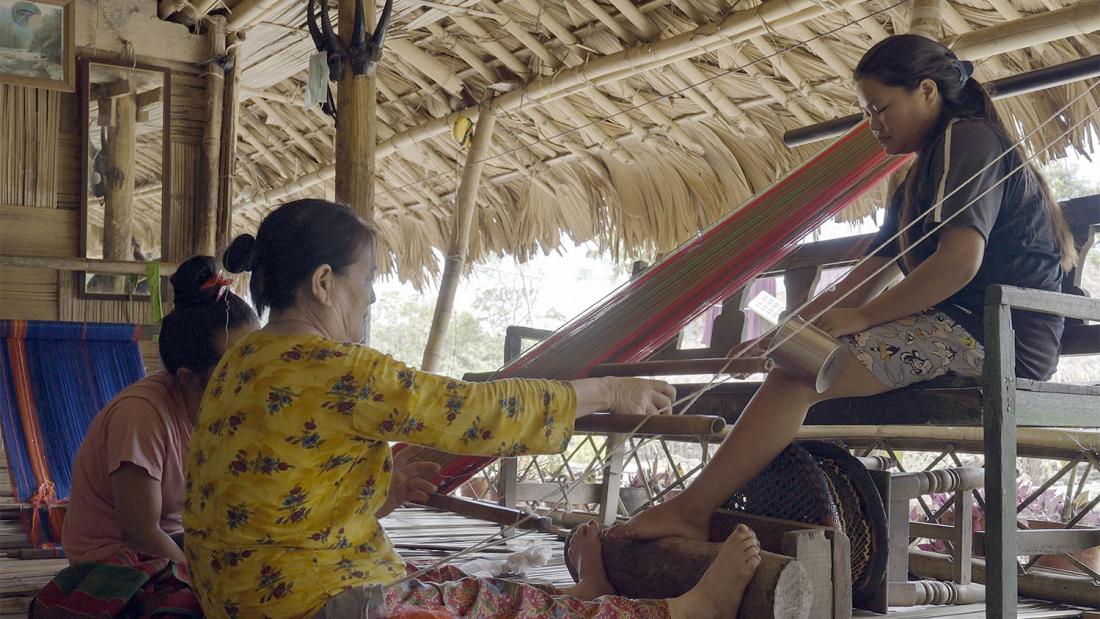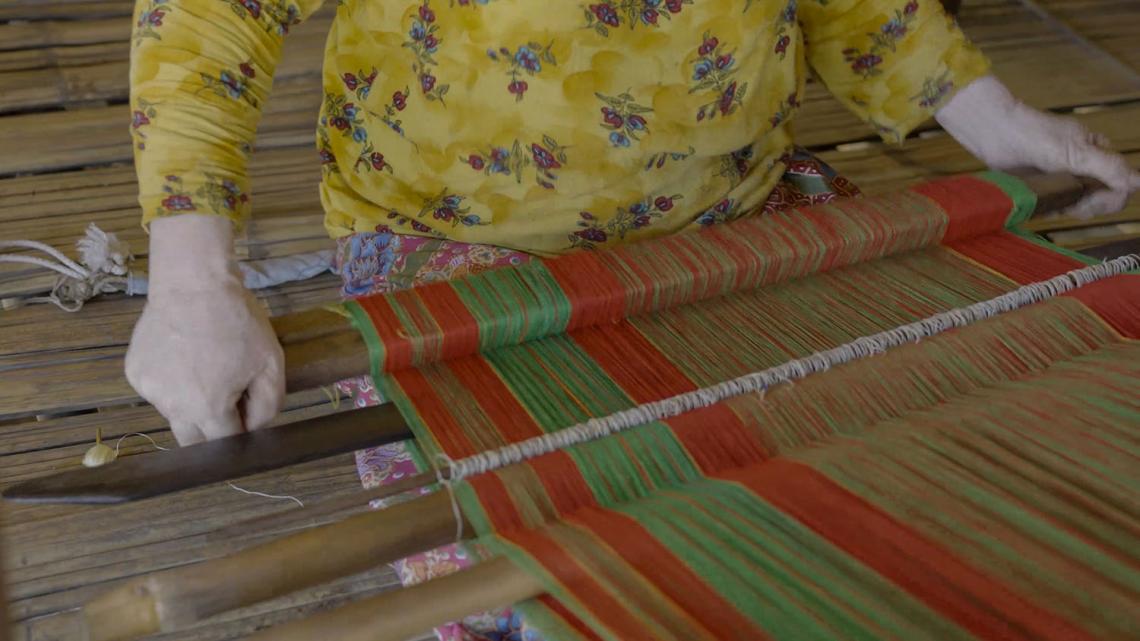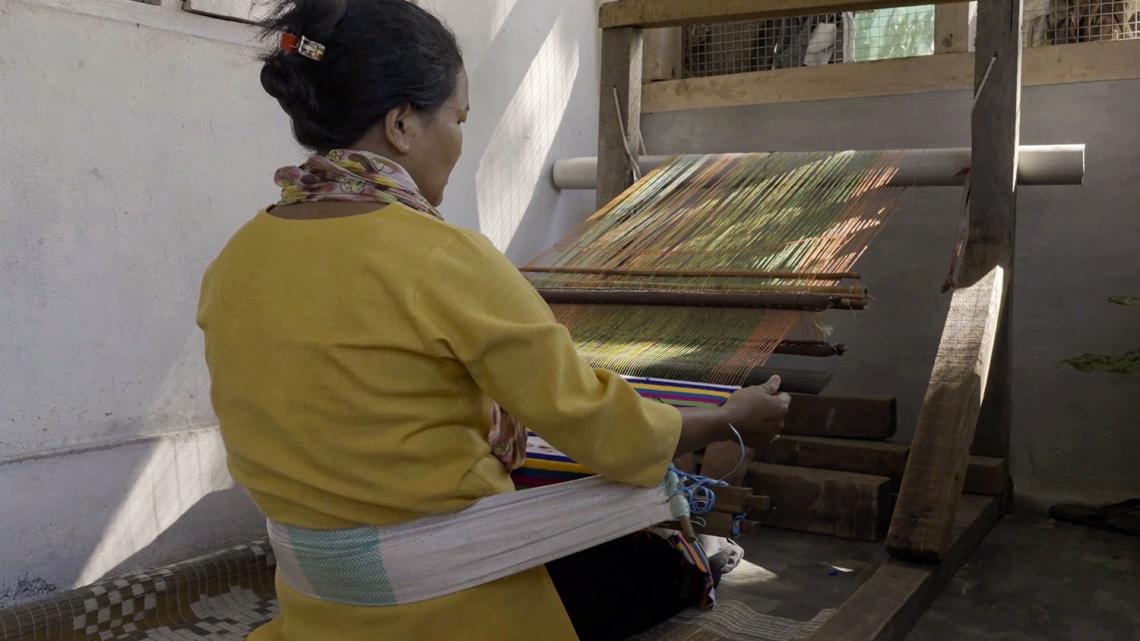Sadin Pangking and Akum Tayeng Prepare the Warp on a Backstrap Loom; Pragadeesh, Marimuthu, Rani, East Siang District, Arunachal Pradesh; c. 2021.
Also known as a loin loom or body-tension loom, a backstrap loom is characterised by a strap fixed to one end of the loom which the weaver wears around their waist, while the other end of the loom has individual straps that allow it to be anchored to a railing or pole, making the device portable. The loom allows the weaver to use their lower body to actively regulate the tension on the warp threads. The backstrap loom is easy to assemble and dismantle and can be rolled and stored anywhere.
Akum Tayeng Seated at a Backstrap Loom in Her Home; Pragadeesh, Marimuthu, Rani, East Siang District, Arunachal Pradesh; c. 2021.
Traditionally, the various components of the loom are made of local wood or bamboo. The warp is first prepared by wrapping thread around a warping frame. It is then transferred to the loom, where heald, or heddle, sticks are used to separate alternate threads of the warp. The weft threads, either contained in a shuttle or manipulated by hand, are passed manually through the warp to create various geometric designs. Since the width of the backstrap loom is limited by the width of the weaver’s waist, any fabric woven on the backstrap loom is usually no more than half a metre wide.
Historical and archaeological evidence of the use of backstrap looms has been found across Peru, Guatemala, Bolivia, China, Tibet, Korea, Japan, Myanmar and India 一 specifically in Ladakh and the Northeast, where they are still in use today. In several communities in the northeastern states of India like Nagaland, Mizoram, Manipur and Assam, weaving using a backstrap loom is a customary and domestic practice for women and is passed down the generations in a family. Ethnologists believe the use of the loom spread from South Asia to the Pacific Ocean, and eventually to South and Central America. In China, loom components fashioned out of bronze date back to the Bronze Age, whereas in Peru, representations of the backstrap loom on vessels of Mochican pottery have been dated to between 200 BCE and 1000 CE.
Rimi Mili Setting up Her Backstrap Loom; Pragadeesh, Marimuthu, Rani, East Siang District, Arunachal Pradesh; c. 2021.
The loom continues to be used by indigenous peoples across the world. Traditionally, the colours of the woven fabrics as well as motifs and patterns have been identifiers of ethnicity. Originally used to make wrap-around skirts and shawls, contemporary weavers have begun incorporating modern designs and colours, creating fabrics for home furnishings, such as cushion covers, tablecloths and wall hangings, to cater to a larger national and international market.
This article first appeared in the MAP Academy Encyclopedia of Art.
The MAP Academy is a non-profit online platform consisting of an Encyclopedia of Art, Courses and a Blog, that encourages knowledge building and engagement with the visual arts and histories of South Asia. Our team of researchers, editors, writers and creatives are united by a shared goal of creating more equitable resources for the study of art histories from the region.





